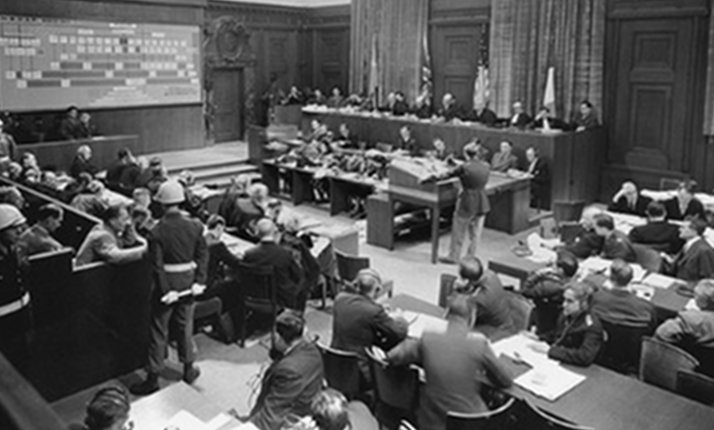Early this week Frank Navarro, a United States Holocaust Memorial Museum trained teacher who has taught at Mountain View High School in California for 40 years, was put on leave after a parent complained about the parallels he was drawing in his world studies class. He was accused of comparing Trump to Hitler, but in actuality he had only pointed out the connections between Trump’s presidential campaign and Hitler’s rise to power.
On September 1 of this year, Holocaust scholar Michael Berenbaum wrote in the article With gratitude toward Donald Trump, how as an educator, he was grateful to Trump for making it easier for him to explain to his students, how it was possible for the Nazis and Hitler to come to power. In my own classroom, it is my students who have made the connections, as I certainly did not have to spell it out for them. We all agree that Trump is not Hitler, but certainly the rhetoric and unabashed racism, antisemitism and xenophobia unleashed by his campaign reminds us of the tactics used by Hitler, the Nazis and his followers.
We all spent an enormously long election season shaking our heads in response to the rhetoric used by the Trump campaign and worried about the reappearance of hate groups such as the Klan and White Supremacists who felt emboldened enough to endorse a major presidential candidate and to insert themselves into the mainstream. Many of us ultimately believed we would get to November 9, breathe a sigh a relief and celebrate a return to normal, but instead the very thing we shook off and feared came true.
I am not condemning those who voted for our President elect nor am I assigning all of the world’s evils upon him. What I and so many others are concerned with is the releasing of the hatred, the appointment of Steve Bannon, a known White Supremacist and Antisemite as his chief White House strategist and senior counselor, as well as others who subscribe to the same ideology. These actions have further empowered the once fringe hate groups and their followers to feel comfortable to spread their hatred and prejudice with a freedom we have not seen in a very long time.
I teach a Holocaust class at a Community College in Phoenix, Arizona that has a diverse population of students of various ethnic groups. The majority of my students are non-white, indigenous or immigrants, Hispanic, Mexican and Muslim and understandably they are concerned about their and their family’s future. Seeing the parallels does not ease their fear, nor mine for that matter, but as an educator it is my job to help them to also see that they can play an active role in preventing and fighting prejudice.

On the day after the election, we discussed how the US government is structured. We then looked at a film clip from the Nuremberg Trials showing the organizational chart of the government of the Third Reich. The size of the chart is quite large and it is remarked it could be larger still, but it would be too hard to read. What was largely noticeable was who sat at the top of the chart: Hitler, and only Hitler, as everyone answered to him. That is a dictatorship, which of course the United States is not. People may not like the results of the election, and those who did like the results are angered by those who did not, for taking their displeasure to the streets. But it is this ability to disagree, and to be able to protest, that makes us America and not Nazi Germany.
Today we started discussing Primo Levi’s Survival in Auschwitz, and my students spent a lot of time discussing Levi’s warning:
“Many people-many nations-can find themselves holding, more or less wittingly, that every stranger is an enemy. For the most part this conviction lies deep down like some latent infection; it betrays itself only in random, disconnected acts, and does not lie at the base of a system of reason. But when it does come about, when unspoken dogma becomes the major premise in a syllogism, then, at the end of the chain, there is the Lager. … The story of the death camps should be understood by everyone as a sinister alarm signal.”
Every generation has created the enemy of the stranger-the “other.” For years, hatred and prejudice has laid dormant, in the US and around the world, and now it is out in the open for all to see. We, as educators, need to help our students understand the similarities and the differences of historic events to our current lives. Historical parallelisms should help us to be more civic minded, to get involved, as we all must band together to fight this epidemic so that it does not end in the result that Levi and so many million others were forced to endure.
Jodi Elowitz is an adjunct professor of the Humanities at Gateway Community College in Phoenix, Arizona, and former Program Coordinator for the Center for Holocaust and Genocide Studies.

Comments 1
Remembering Wannsee: Civilization and Barbarism - Center for Holocaust & Genocide Studies — January 20, 2017
[…] 75th anniversary of this decisive event in the history of the Holocaust coincides not only with the Donald Trump Inauguration, but also with the passing, this month, of sociologist Zygmunt Bauman, the author of a seminal book […]